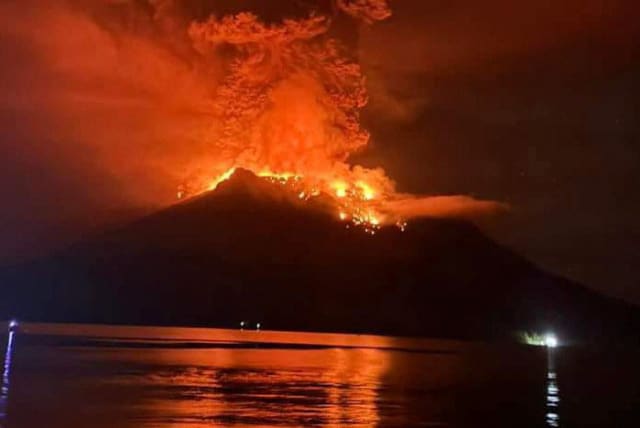Volcano in Iceland erupts for fifth time since December

A volcano in southwestern Iceland erupted, shooting lava 50 meters high, causing disruptions, evacuations, and infrastructure damage, highlighting ongoing volcanic activity on the Reykjanes peninsula
A volcano in southwestern Iceland sent glowing hot lava shooting 50 meters into the air on Wednesday, its fifth eruption since December. This came shortly after an eight-week-long eruption on the same Reykjanes peninsula ended.
Authorities warned of the risk of renewed volcanic activity in the area just south of Reykjavik's capital, as studies showed magma accumulated underground.
"The lava fountains reach 50 meters (164 feet) high, and the fissure length seems to be around 2.5 km and growing, Iceland's Met Office said in a statement.
Flights continued as usual at Reykjavik's Keflavik Airport, according to the airport's website.
The fiery spectacle underlines the challenges faced by the island nation of almost 400,000 people. Scientists have warned that repeated eruptions are possible in Reykjanes for decades or even centuries.
Wednesday's eruption was the eighth since 2021 on the peninsula, which has been home to some 30,000 people since geological systems that had lain dormant for 800 years became active again.
Iceland volcanic eruption disruptions
Such volcanic activity has disrupted district heating, closed key roads, and razed several homes in the Grindavik fishing town, to which only a few residents have returned since an evacuation in late 2023.
Police said Iceland's civil defense was put on high alert, and authorities again ordered an evacuation of Grindavik.
The nearby Blue Lagoon geothermal spa, known for its large outdoor pools, was shut, and its guests evacuated.
To prevent further damage, man-made barriers have been built to steer lava away from infrastructure, including the Svartsengi geothermal power plant, the Blue Lagoon spa, and Grindavik.
Residents refer to Iceland as the "Land of Fire and Ice" - a tribute to its otherworldly landscape of mountain peaks, ice fields, and fjords, a seismic hotbed positioned between the Eurasian and North American tectonic plates.
The Environment and Climate Change portal is produced in cooperation with the Goldman Sonnenfeldt School of Sustainability and Climate Change at Ben-Gurion University of the Negev. The Jerusalem Post maintains all editorial decisions related to the content.
Jerusalem Post Store
`; document.getElementById("linkPremium").innerHTML = cont; var divWithLink = document.getElementById("premium-link"); if (divWithLink !== null && divWithLink !== 'undefined') { divWithLink.style.border = "solid 1px #cb0f3e"; divWithLink.style.textAlign = "center"; divWithLink.style.marginBottom = "15px"; divWithLink.style.marginTop = "15px"; divWithLink.style.width = "100%"; divWithLink.style.backgroundColor = "#122952"; divWithLink.style.color = "#ffffff"; divWithLink.style.lineHeight = "1.5"; } } (function (v, i) { });

